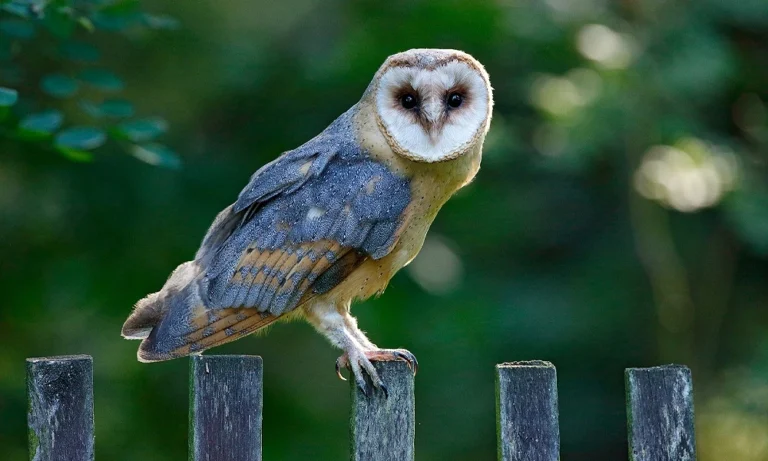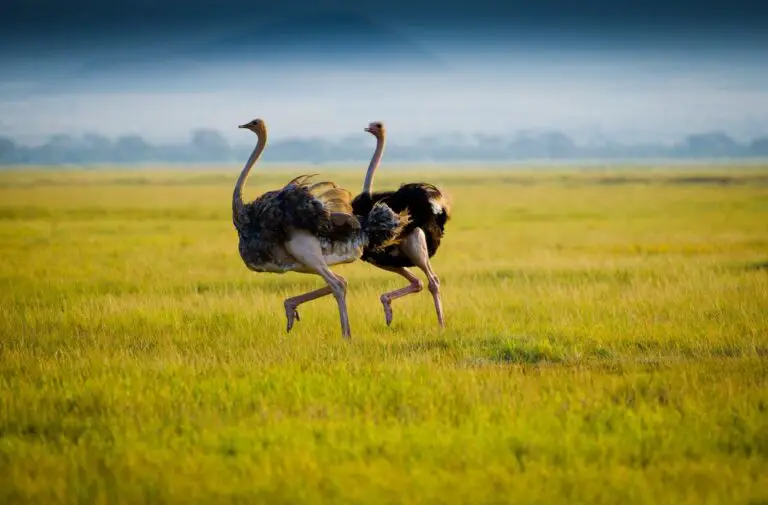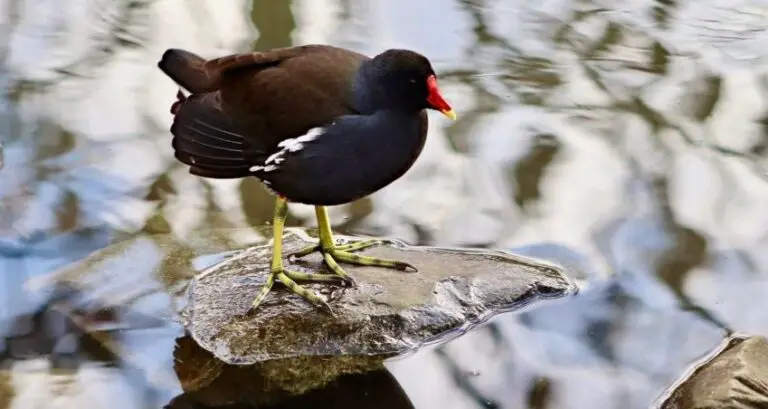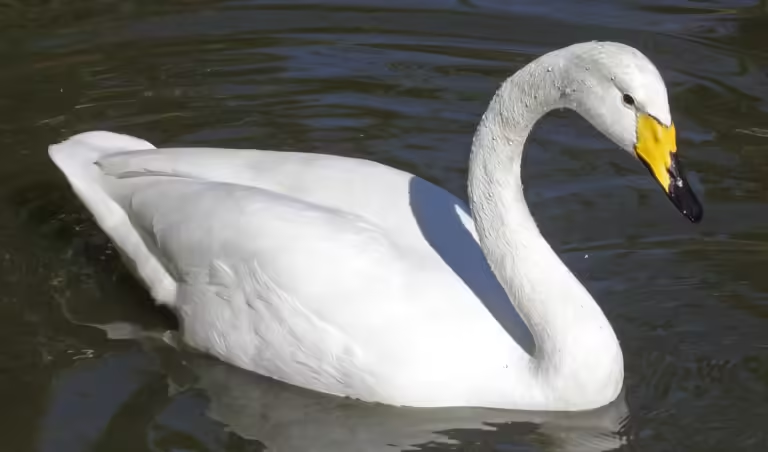Bird symbols hold a universal appeal and have had significant cultural and religious significance throughout history. From mythology and literature to art and various cultures around the world, bird symbols have been omnipresent in human society. In this article, we will explore the fascinating world of bird symbolism and unlock the meanings behind these captivating creatures.
We will delve into specific cultures, including Native American, Chinese, Celtic, Egyptian, Hinduism, Christianity, Islam, Greek, and Roman mythologies, Norse mythology, as well as other cultures like Aztec, Japanese, and African to discover the unique bird symbols and their meanings.
Furthermore, we will discuss the continued relevance of bird symbols in modern society and explore their association with various themes, including freedom, peace, spirituality, love, power, transformation, protection, wisdom, good luck, rebirth, travel, communication, intuition, and beauty.
If you’ve ever wondered about the significance behind bird symbolism, you won’t want to miss this comprehensive guide. We will answer common questions and help you unlock the meaning behind these captivating creatures.
Bird Symbols in Native American Culture
The rich culture and traditions of Native American tribes include a deep appreciation for the natural world, with bird symbols playing a significant role in their belief system. The connection they share with the avian species can be seen through their mythology, rituals, and daily life.
Among the various bird symbols found in Native American culture, the eagle is one of the most significant, representing strength and freedom. To many tribes, it is a sacred bird and is often used in ceremonies and rituals. The eagle feather is also a symbol of honor and respect, and it is customary to present it as a gift, especially during important occasions.
Bird Symbols in Native American Mythology
Birds play a significant role in Native American mythology, with each species having its own unique meaning and significance. The raven, for example, is associated with the creation and is considered a wise and powerful figure in many tribes’ mythology. The thunderbird, a mythical bird of enormous size and power, is often depicted as a symbol of strength and protection and is a prevalent motif in many Native American arts and crafts.
Other bird symbols like the mockingbird, the owl, and the crane also hold spiritual significance in Native American mythology, representing different traits like wisdom, mystery, and peace.
Bird Symbols in Native American Art and Crafts
Native American art and crafts feature an array of bird symbols, with each design telling a unique story. For example, the Hopi tribe’s Kachina dolls often feature different bird figures, each representing a particular quality or characteristic.
Similarly, Navajo rugs often feature bird designs, with each species holding different meanings. The eagle, for example, is often depicted as a symbol of freedom, while the hummingbird represents love and beauty.
The use of bird symbols in Native American art provides a fascinating glimpse into the significance of birds in their culture and their deep respect for the natural world.
Bird Symbols in Chinese Culture
Bird symbolism has played a vital role in China’s culture for centuries. Birds have been an integral part of their art, literature, astrology, and folklore. Each bird species has unique symbolic meanings in Chinese culture, providing deeper insight into their beliefs and customs.
The crane is a revered bird in China, symbolizing longevity, wisdom, and good fortune. This bird is a common motif in Chinese paintings, representing peace, prosperity, and a long life. The Chinese consider the crane as a messenger of the gods and believe that it can carry souls to heaven.
| Bird Species | Symbolic Meaning |
|---|---|
| Phoenix | Renewal, rebirth, immortality |
| Mandarin Duck | Love, fidelity, passion |
| Magpie | Happiness, joy, good news |
The phoenix is another important bird symbol in Chinese culture, representing renewal, rebirth, and immortality. The phoenix is often depicted alongside the dragon, and both are regarded as powerful symbols of prosperity and good luck. The mandarin duck is also a popular bird symbol in Chinese culture and represents love, fidelity, and passion. This bird mates for life, making it a popular symbol for marriage and romance.
The magpie is a bird that is commonly associated with happiness, joy, and good news in Chinese culture. Its presence is said to bring good luck and wealth. In ancient Chinese folklore, the magpie was considered to be a bridge between the mortal world and the divine world.
Bird Symbols in Chinese Astrology
Birds have also played a significant role in Chinese astrology. Each year, a different bird symbol is associated with the twelve zodiac signs. The rooster, for example, is the symbol for those born in the year of the rooster. These individuals are said to be intelligent, confident, and hardworking.
The Chinese also associate birds with directional elements. The Phoenix, for example, is associated with the south direction, while the crane is associated with the west direction. These directional elements are believed to have a direct impact on an individual’s destiny and personality traits.
In conclusion, birds have been an integral part of Chinese culture, playing a significant role in their art, literature, astrology, and folklore. Each bird symbol has its unique meaning, offering insight into the beliefs and customs of the Chinese people.
Bird Symbols in Celtic Culture
Celtic culture is steeped in symbolism, and birds play a significant role in their mythology and art. The Celts regarded birds as messengers between the world of the living and the dead, as well as symbols of knowledge, wisdom, and divinity.
Specific birds in Celtic culture
The most important bird in Celtic mythology is the Raven, a bird associated with the god Bran. Ravens were believed to be oracles, capable of prophesying the future and carrying messages between the worlds of the living and the dead. The Raven is also associated with war and battle, and Celtic warriors would often carry raven banners into battle.
The Eagle is another significant bird in Celtic culture, representing strength, power, and nobility. Eagles were often depicted in Celtic art and were also associated with the god Lugus, a deity associated with arts, crafts, and war.
The Swan is a symbol of purity and grace in Celtic mythology, often associated with the goddess Brigid. The swan is also believed to possess the power of prophecy and was thought to be able to look into the future and foretell events.
Bird symbolism in Celtic art
Birds were a common motif in Celtic art, appearing in intricate knotwork designs and other decorative patterns. The Celtic Knot, a stylized representation of the eternity knot, often features birds perched on or flying through the knotwork. The birds are believed to symbolize the soul’s journey through life and the afterlife.
The importance of bird symbols in Celtic culture cannot be overstated. The Celts regarded birds as powerful symbols of divinity, knowledge, and wisdom, and their mythology and art are filled with references to birds and their symbolic meanings.
Bird Symbols in Egyptian Culture
Among the many ancient cultures that revered birds, the Egyptians hold a special place. Birds were believed to be messengers of the gods and were often depicted in Egyptian art. From the ibis to the falcon, birds held many symbolic meanings in Egyptian mythology, religion, and daily life.
Birds in Egyptian Mythology
Birds played a crucial role in Egyptian mythology, often being associated with the gods and goddesses. The falcon, for example, was associated with Horus, the sky god, and was believed to represent strength and power. The ibis, on the other hand, was associated with Thoth, the god of wisdom and knowledge, due to its long, curved beak that resembles a quill pen.
The Bennu bird, also known as the phoenix, was a symbol of rebirth and renewal. According to Egyptian mythology, the Bennu bird was the only one of its kind and lived for 500 years before building a nest and setting itself on fire. From the ashes, the bird was reborn, representing the cycle of death and rebirth.
Birds in Egyptian Art and Religion
Birds were often depicted in Egyptian art and were believed to have a protective role in daily life. The image of the hawk or vulture with outstretched wings was a common protective symbol and was often carved into amulets or other protective objects. In addition, birds were believed to have the power to carry messages to the gods and were often depicted with human arms reaching out to be carried to the heavens.
Birds also played an important role in Egyptian funerary practices. The ba, or soul, of the deceased, was believed to take on the form of a bird and fly into the afterlife. The god Thoth was often depicted with the head of an ibis and was believed to be responsible for recording the deeds of the deceased in the afterlife.
Bird Symbols and Their Cultural Significance
The importance of birds in Egyptian culture can still be seen today, with many of the country’s national symbols featuring birds. The ibis, for example, is still a common sight in Egypt and is often depicted in modern art and literature. The falcon, too, remains an important symbol in Egyptian culture, representing strength, power, and protection.
Overall, bird symbols played a significant role in ancient Egyptian culture, holding deep spiritual and cultural meanings that continue to resonate today.
Bird Symbols in Hinduism, Christianity, Islam
Bird symbolism has been a part of many cultures, religions, and mythologies around the world. In this section, we will explore the significance of bird symbols in Hinduism, Christianity, and Islam, three of the world’s major religions.
Bird Symbols in Hinduism
| Bird | Symbolic Meaning |
|---|---|
| Peacock | Beauty, royalty, love, and prosperity. The peacock is also associated with the goddess of knowledge and wealth, Saraswati, and the god of thunder and war, Indra. |
| Garuda | Power, speed, and vigilance. Garuda is the mount of Lord Vishnu and is known for his ability to fly at great speed, making him a symbol of swiftness. |
| Swan | Purity, grace, and beauty. The swan is associated with Saraswati, the goddess of knowledge, and is believed to have the ability to separate milk from water, representing the ability to differentiate between good and evil. |
In Hinduism, birds are seen as divine messengers and often represent various gods and goddesses. They are also believed to carry messages from the divine realm and are often associated with spiritual awakening and transformation.
Bird Symbols in Christianity
| Bird | Symbolic Meaning |
|---|---|
| Dove | Peace, purity, and innocence. The dove is often associated with the Holy Spirit and is a symbol of hope and new beginnings. |
| Eagle | Strength, courage, and freedom. The eagle is often associated with God, representing His power and majesty. |
| Rooster | Vigilance and resurrection. The rooster is often associated with Peter, one of Jesus’s disciples, and is a symbol of his faith and repentance after denying Jesus three times. It also represents the resurrection of Jesus. |
In Christianity, birds are often used to symbolize different aspects of the faith, including the Holy Spirit, angels, and the resurrection of Jesus. They are also used to represent virtues such as purity, humility, and faith.
Bird Symbols in Islam
| Bird | Symbolic Meaning |
|---|---|
| Pigeon | Peace and love. The pigeon is often associated with kindness and is believed to have been favored by the Prophet Muhammad. |
| Eagle | Strength and power. The eagle is often associated with Allah and represents His authority and majesty. |
| Peacock | Beauty and wealth. The peacock is often associated with paradise and represents the beauty and luxury that awaits the faithful in the afterlife. |
In Islam, birds are often used to symbolize different aspects of the faith, including peace, love, and strength. They are also often associated with paradise and represent the rewards that await the faithful in the afterlife.
Bird Symbols in Greek and Roman Mythology
In Greek and Roman mythology, birds held significant roles as symbols of various gods, heroes, and creatures. Birds were often depicted as messengers, omens, or guides for these mythological figures.
The Eagle
The eagle was a powerful symbol in both Greek and Roman mythology, often associated with the god Zeus (Greek) or Jupiter (Roman). As the king of the birds, the eagle was seen as a symbol of power, strength, and leadership.
In Greek mythology, the eagle was the companion of Zeus and was often depicted carrying his thunderbolts. It was also believed that the eagle could fly high enough to reach the heavens, making it a bridge between the mortal and divine worlds.
In Roman mythology, the eagle was associated with Jupiter, the god of the sky and thunder. The eagle was often depicted holding a scepter or lightning bolt, symbolizing Jupiter’s power and authority.
The Owl
The owl was a symbol of wisdom in both Greek and Roman mythology, associated with the goddess Athena (Greek) or Minerva (Roman). It was often depicted sitting on the shoulder of these goddesses.
The owl was revered for its ability to see in the dark and its keen senses. It was seen as a guardian of knowledge, a protector of the wise, and a symbol of scholarly pursuits.
The Phoenix
The phoenix was a symbol of rebirth and renewal in both Greek and Roman mythology. The bird was believed to live for hundreds of years before bursting into flames and being reborn from its ashes.
The phoenix was often associated with the sun and was seen as a symbol of immortality and resurrection. It was also believed to have healing powers and was revered for its ability to restore life.
“The phoenix hope, can wing her way through the desert skies, and still defying fortune’s spite; revive from ashes and rise.” – Miguel de Cervantes
The Harpy
The harpy was a fearsome bird-like creature in Greek mythology, depicted as a woman with the wings and talons of an eagle. It was often associated with storms and bad weather and was seen as a symbol of destruction and chaos.
The harpy was also believed to be a thief, stealing food and treasure from humans. It was seen as a warning against greed and excess.
Overall, birds played an important role in the symbolism of Greek and Roman mythology, representing concepts such as power, wisdom, rebirth, and destruction. Their presence in these ancient stories continues to influence and inspire modern culture.
Bird Symbols in Norse Mythology
Birds played an important role in Norse mythology, displaying an association with the gods and goddesses. The most notable bird symbol in Norse mythology is the raven, associated with Odin, the god of wisdom and war.
Odin had two ravens, Huginn and Muninn, who flew around the world and brought him information about the happenings of distant lands. The raven was also associated with death and the afterlife, as it was believed that they guided the souls of the dead to their final resting place.
The Eagle
The eagle was another significant bird symbol in Norse mythology and was associated with the god of thunder, Thor. It was said that the eagle sat on top of the world tree, Yggdrasil, and could see everything happening in the world.
The eagle was also a symbol of courage and power, and it was believed that it could fly to the sun and then back to Earth without getting burned.
The Hawk
The hawk was another bird with significant symbolism in Norse mythology. It represented foresight, keen observation, and precision. The hawk was associated with the goddess Skadi, who was the goddess of hunting, skiing, and mountains.
According to Norse mythology, Skadi used hawks to help her hunt prey in the mountains. The hawk was also a symbol of freedom and was believed to be able to move between the physical and spiritual realms with ease.
The importance of bird symbols in Norse mythology highlights the cultural significance of birds in ancient societies. These symbols continue to fascinate and inspire modern society, shaping our understanding of the natural world and the spiritual realm.
Bird Symbols in Other Cultures
Bird symbols are not limited to just a few cultures, but are present in many others around the world. In this section, we will explore some of the unique bird symbols found in cultures such as the Aztec, Japanese, and African.
Aztec Culture
The Aztecs revered birds such as the eagle and the quetzal as divine messengers of the gods. The eagle was particularly important, as it represented the sun and symbolized power, strength, and courage. The quetzal, on the other hand, was a symbol of freedom and beauty, and it was believed that its feathers had magical properties.
| Bird Symbol | Meaning |
|---|---|
| Eagle | Power, strength, courage |
| Quetzal | Freedom, beauty, magic |
Japanese Culture
Bird symbolism has played an important role in Japanese art and literature for centuries. The crane is a popular bird symbol, often associated with longevity, good fortune, and happiness. The phoenix, a legendary bird that rises from the ashes, represents rebirth and transformation.
| Bird Symbol | Meaning |
|---|---|
| Crane | Longevity, good fortune, happiness |
| Phoenix | Rebirth, transformation |
African Culture
Bird symbolism is also prominent in many African cultures, with birds often representing important cultural values and beliefs. The ibis, for example, is associated with wisdom and knowledge, while the falcon is a symbol of power and protection.
| Bird Symbol | Meaning |
|---|---|
| Ibis | Wisdom, knowledge |
| Falcon | Power, protection |
These are just a few examples of the rich and diverse bird symbolism found in cultures around the world. Each culture has its own unique interpretation of these symbols, but they all share a common reverence for the beauty, power, and mystery of birds.
Bird Symbols in Modern Society
The relevance of bird symbols continues to persist in modern society. They are associated with various themes and ideas that have significance across cultures. Here are some of the most prominent associations:
| Theme | Associated Bird Symbol |
|---|---|
| Freedom | Eagle |
| Peace | Dove |
| Spirituality | Owl |
| Love | Swan |
| Power | Hawk |
| Transformation | Phoenix |
| Protection | Hummingbird |
| Wisdom | Raven |
| Good Luck | Stork |
| Rebirth | Peacock |
| Travel | Albatross |
| Communication | Parrot |
| Intuition | Magpie |
| Beauty | Flamingo |
Bird symbols are not limited to these themes, however. They have been used in countless ways to convey ideas, concepts, and emotions. Their continued presence in modern society serves as a testament to their enduring significance.
Bird Symbols: Frequently Asked Questions
As bird symbols have played an important role in cultures around the world, they continue to captivate individuals today. Here are some frequently asked questions regarding bird symbols and their significance.
Bird Symbols in Dream Interpretation: What Do They Mean?
Birds seen in dreams are often interpreted as messengers of the subconscious. The type of bird and its behavior in the dream can give insight into what it represents. For example, an eagle may symbolize power and victory, while a dove may represent peace and purity.
What is the Significance of Bird Symbols in Tattoo Design?
Birds are a popular choice in tattoo design due to their beauty, grace, and symbolic meanings. Different species of birds have different connotations, such as the phoenix representing rebirth, or the swallow symbolizing travel and navigation.
How are Bird Symbols Used in Heraldry?
Birds are frequently used in heraldry to represent specific traits or values. For example, the eagle may represent strength and leadership, while the dove can symbolize peace and gentleness.
What is the Role of Bird Symbols in Literature Analysis?
Bird symbols are often used in literature to convey complex themes and ideas. For example, in Harper Lee’s “To Kill a Mockingbird,” the mockingbird is a symbol of innocence and how it is vulnerable to injustice and harm.
What Are Some Famous Bird Symbols in History?
Throughout history, birds have been used as symbols for different nations and groups. The bald eagle, for example, is the national bird and symbol of the United States, while the peacock has been used as a symbol of royalty in many cultures.
What are Some Examples of Bird Symbols in Art?
Birds have been used as a subject in art for centuries, and often hold symbolic meaning. For example, the owl is sometimes depicted with Athena, the Greek goddess of wisdom, and is associated with knowledge and intellect.
What Are Some Common Bird Symbols and Their Meanings?
Some common bird symbols and their meanings include:
- Dove: peace, purity, love
- Raven: death, transformation, mystery
- Eagle: strength, leadership, freedom
- Peacock: beauty, royalty, pride
How Are Bird Symbols Depicted in Famous Paintings?
Birds have been a popular subject in paintings throughout history, often holding symbolic meaning. For example, the crow in Vincent Van Gogh’s “Wheatfield with Crows” has been interpreted as a symbol of death and despair.
What is the Cultural Significance of Bird Symbols?
Bird symbols hold cultural significance in many different parts of the world. For example, in Japan, the crane is a symbol of longevity and good fortune, while in many Native American cultures, the eagle is seen as a sacred bird with strong spiritual connections.
How Were Bird Symbols Used in Ancient Civilizations?
Bird symbols were important in many ancient civilizations, often representing deities or holding spiritual significance. In ancient Egypt, the ibis was associated with Thoth, the god of wisdom, while in ancient Greece, the owl was linked to Athena and was seen as a symbol of knowledge.













